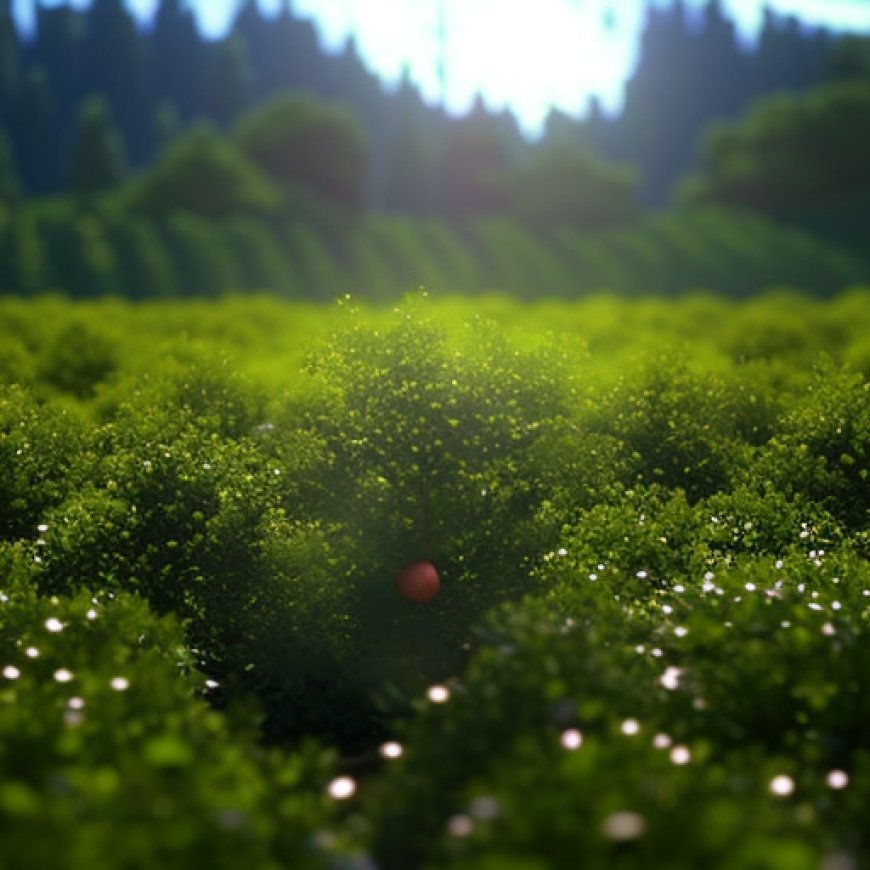fruitful landscapes: the start of a food forest, with michael judd
fruitful landscapes: the start of a food forest, with michael judd A Way to Garden


Creating Food Forests for Sustainable Development
The Concept of Food Forests
The term “food forest” may sound intimidating, but it doesn’t necessarily require a large space. In fact, even a small garden can accommodate a fruit tree or two, underplanted with carefully chosen companion plants. Maryland-based Michael Judd, a champion of edible landscaping and author of “For the Love of Pawpaws,” believes that most gardeners have room for a little bit of fruity deliciousness in their yards. By creating food forests, we can not only enjoy homegrown fruits but also contribute to sustainable development.
What are Food Forests?
A food forest is not about growing food in a forest but rather mimicking the structure and functionality of a healthy ecosystem. In a food forest, different layers of plants work together symbiotically, just like in a natural forest. The overstory trees provide shade and protection, while the mid-story and understory trees, along with vines and ground-level layers, create a diverse and productive ecosystem. By planting fruit trees within a guild of companion plants, we can support their growth and enhance their productivity.
The Role of Sustainable Development Goals (SDGs)
Food forests align with several Sustainable Development Goals (SDGs) established by the United Nations. By promoting biodiversity, reducing the need for chemical inputs, and providing nutritious food, food forests contribute to SDG 2 (Zero Hunger) and SDG 15 (Life on Land). Additionally, they can help combat climate change by sequestering carbon dioxide and improving soil health, supporting SDG 13 (Climate Action).
Choosing Centerpieces and Companion Plants
When selecting centerpieces for food forests, it’s essential to consider the local climate and growing conditions. Some popular choices include pawpaws, elderberries, and American persimmons. These trees are relatively easy to grow and offer delicious fruits.
Companion plants play a crucial role in food forests. They can fix nitrogen, attract beneficial insects, provide mulch, and serve as pollinator magnets. Examples of companion plants include wild Baptisia, yarrow, comfrey, and Echinacea. By carefully selecting and arranging these plants, we create a diverse and productive ecosystem that supports the main fruit tree.
Dealing with Challenges
One common challenge in food forests is deer browsing. To deter deer, Michael Judd recommends using fencing or planting spiky plants like gooseberries and aromatic herbs like sage. These plants discourage deer from approaching the main fruit tree.
Another challenge is cross-pollination for certain fruit trees like pawpaws. It’s important to plant at least two pawpaw trees within 20 feet of each other to ensure proper pollination. Hand-pollination can also be done if necessary.
The Fruit Patch App
To help gardeners design their own food forests, Michael Judd has developed the Fruit Patch App. This app guides users through the process of selecting a centerpiece tree and companion plants based on their specific growing conditions. It simplifies the design process and empowers individuals to create their own sustainable food forests.
Conclusion
Food forests offer a practical and sustainable approach to gardening that aligns with the SDGs. By incorporating fruit trees and companion plants, we can create diverse and productive ecosystems that provide nutritious food while supporting biodiversity and mitigating climate change. The Fruit Patch App serves as a valuable tool for individuals interested in creating their own food forests and contributing to sustainable development.
SDGs, Targets, and Indicators
| SDGs | Targets | Indicators |
|---|---|---|
| SDG 2: Zero Hunger | Target 2.3: By 2030, double the agricultural productivity and incomes of small-scale food producers, in particular women, indigenous peoples, family farmers, pastoralists, and fishers, including through secure and equal access to land, other productive resources and inputs, knowledge, financial services, markets, and opportunities for value addition and non-farm employment. | Not mentioned or implied in the article. |
| SDG 15: Life on Land | Target 15.2: By 2020, promote the implementation of sustainable management of all types of forests, halt deforestation, restore degraded forests and substantially increase afforestation and reforestation globally. | Not mentioned or implied in the article. |
1. The SDGs addressed or connected to the issues highlighted in the article are SDG 2: Zero Hunger and SDG 15: Life on Land.
2. The specific target under SDG 2 that can be identified based on the article’s content is Target 2.3: By 2030, double the agricultural productivity and incomes of small-scale food producers.
3. There are no indicators mentioned or implied in the article that can be used to measure progress towards the identified targets.
4. The table below presents the findings from analyzing the article:
| SDGs | Targets | Indicators |
|---|---|---|
| SDG 2: Zero Hunger | Target 2.3: By 2030, double the agricultural productivity and incomes of small-scale food producers, in particular women, indigenous peoples, family farmers, pastoralists, and fishers, including through secure and equal access to land, other productive resources and inputs, knowledge, financial services, markets, and opportunities for value addition and non-farm employment. | Not mentioned or implied in the article. |
| SDG 15: Life on Land | Target 15.2: By 2020, promote the implementation of sustainable management of all types of forests, halt deforestation, restore degraded forests and substantially increase afforestation and reforestation globally. | Not mentioned or implied in the article. |
Behold! This splendid article springs forth from the wellspring of knowledge, shaped by a wondrous proprietary AI technology that delved into a vast ocean of data, illuminating the path towards the Sustainable Development Goals. Remember that all rights are reserved by SDG Investors LLC, empowering us to champion progress together.
Source: awaytogarden.com

Join us, as fellow seekers of change, on a transformative journey at https://sdgtalks.ai/welcome, where you can become a member and actively contribute to shaping a brighter future.







